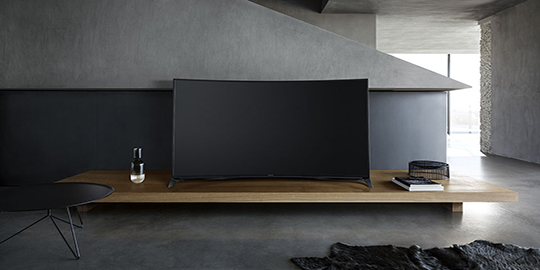
Technology Observatory February 23-March 1
Another week, the Technology Observatory compiles for you the latest key stories from the world of technology. The MWC will take place next week, so it's going to be an intense week.
● The new, curved 4K Pro Panasonic TVs promise the perfect image
● YouTube Kids, the children's app by YouTube, is already here
● New bets for all tastes: iOS 8.3, OS X 10.10.3 and AppleTV
● This is the most important thing we're expecting from MWC 2015
● Twitter for Android already offers us a summary of the best tweets with "While you were out..."
● Bq presents its new Aquaris M4.5, M5 and M5.5
● Pebble Time, now in color and with a renewed interface
● Microsoft takes the step OneDrive needed to win the war in the cloud
● Google has started sending prototypes of the new Google Glass to some "partners"
● The new Motorola Moto E is already official
● Google could announce Android Pay in May at the I/O 2015
● Sponsored results arrive with Play Store searches
● Apple announces a new event on March 9: Apple Watch within sight
● Vodafone will present at MWC its innovations for making the most of the 4G networks
● Brazil decides to NOT block WhatsApp in the country
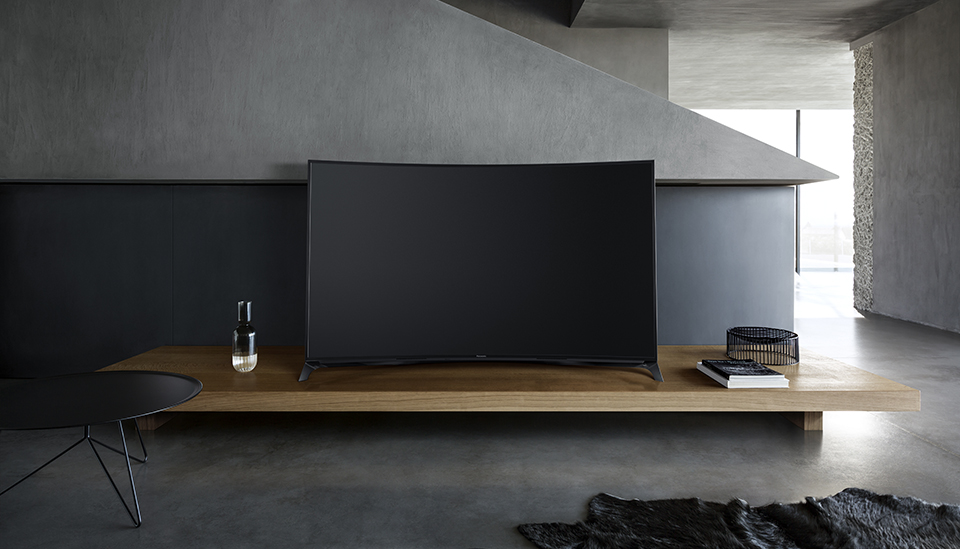
Panasonic already has a new flagship for image. We're referring to the new CR850E, a model that will arrive to stores as of September in 65 and 55-inch versions and brags of being the brand's first model to offer a curved design and 4K Pro resolution. This innovative name results of fusing together the new 4K Studio Master processor with Wide Color Phosphor technology, which covers 98% of the DCI color space, offering colors that are more natural and realistic. This way, the images obtained maintain almost with complete exactitude the intentions of the video creator, a truly interesting option for professionals or movie lovers. In addition, the new 4K Studio Master processor will manage color and offer more advanced settings, like 3D search tables which until now were only available in professional monitors, with the innovation of including control for Cian, Magenta and yellow tones, summing a total of 8,000 reference points (when the habitual is 100). According to Panasonic itself, the Wide Color Phosphor technology obtains "considerable" brightness that produces the same light as Quantum Dot does, however, with half the consumption. Concerning its technical specifications, the panel offers a resolution of 3,840 x 2,160 pixels at 1600 Hz, has 2 speakers of 10 W and two subwoofers of 10 W, the new Smart TV My Home Screen 2.0 platform based on Firefox OS, 2 rear HDMI and 1 side one (the three function at 4K/60p/50p), USB, SD card reader, Ethernet, Scart, Components, and optical and headphone jacks. At the moment, the price of these new models is unknown, though what is known is that these will not arrive until September.
The youngest household members have something to celebrate today. Moreover, the adults looking after them do, too. The YouTube application for children, baptized YouTube Kids, is already a reality, as you can imagine, as a solution that offers video and music contents specially thought of for children (with educational and search options), and which also offers a parental control function, that enables adults to set limits for children. These limitations are not only related to the content (it is not possible to even access comments in this version), but likewise certain criteria may be established concerning sound or the time spent using the application itself. When it comes to offering children fun, no limits have been set, thanks to a friendly and very simple interface, particularly designed for use with tablets. Are you intrigued? If so, it's as simple as visiting the corresponding shop (Google Play or iTunes) to download it... as long as you reside in the US. For the time being, YouTube and Google have refrained from opening up too much with this new initiative and only offer it in that country. Let's see if they don't stay limited to the North American market and soon expand across other borders.
A few weeks after the first and still unstable launch without iOS 8.2, Apple has just deployed the second beta of the iOS 8.3 for its community of developers. We know that this version will bring improvements to the Siri voice, though we're still waiting for the developers' curiosity to confirm this, and make us discover new features. Together with this new beta, we also have a new preliminary version of the iOS in AppleTV about which we also have no news and another test version of the OS X 10.10.3 with the new Photos app for Mac. We also expect that new functions will be revealed for this system as well, but we already know that it will have new emojis and will be included with Google's two-step verification. For now, Apple has requested everyone who gives this beta version of the OS X a try to focus on Photos for Mac. All of the app's weaknesses must be detected and fine-tuned as much as possible for its rollout. The company also requests for special attention to be paid to the screen-sharing function and the connections to public Wi-Fi. Let's summarize, because now that the folks in Cupertino work with several future versions of their systems at the same time, it's really easy to get confused: right now we have iOS 8.1.3. iOS 8.2 already has five betas and its launch is scheduled for March. Today we'll take a look at the second iOS 8.3 beta with improvements to Siri. iOS 8.4 is already functioning at the Cupertino labs with the supposed new music streaming service activated. iOS 9, also undergoing development internally, will focus on being more stable and lighter, instead of presenting new features. How confusing, huh?
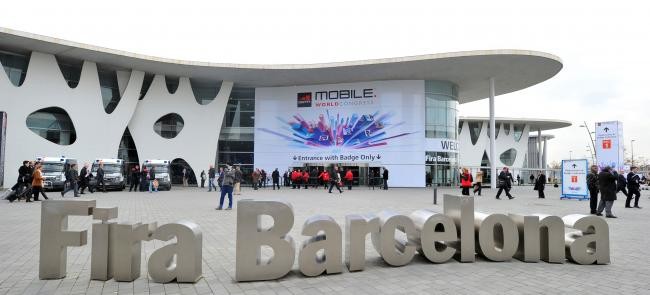
We're just a few days away from the most important trade show of the year for smartphones, their accessories and peripherals. Mobile World Congress 2015 will officially begin on Monday March 2, though you already know that the launches occur a few days before. What will we find in Barcelona? The major uncertainty that little by little is being clarified thanks to countless leaks that have occurred since some time ago. Some sure values are almost fully known, while others are being guessed at and hint at their design or some features. Below we present the most important products we expect to see at MWC 2015.
Samsung Galaxy S6
It's about time. Samsung Galaxy S6 will be the star product that the South Korean company will take to Barcelona, its new flagship - with the permission of Galaxy Note 4 - together with a series of features that are practically known in depth. Worth highlighting, the - foreseeable - use of a new SoC Exynos to the detriment of the Snapdragon 810. It is also speculated that we will discover several models, one with curved screens similar to the style of the Galaxy Note Edge. Therefore, we expect that one of these devices will be the focus of a lot of attention.
HTC One M9
Another flagship, this time for an HTC that seems to have found the secret with its first One M7 later followed by the One M8. This year is the time for the HTC One M9, a phone about which everything leakable has been leaked. What calls a lot of attention is its bet on a 5-inch FullHD screen, while its competition is reaching for sharper resolutions. Otherwise, the so-desired Snapdragon 810, 3 GB of RAM and a camera of 20 megapixels (the Ultrapixels stay on the front, apparently) and a price, some say, of €749 euros, which we hope will not be the definitive one.
Qualcomm Snapdragon 810 for everyone
With an initial appearance at CES 2015 inside the LG G Flex 2, Qualcomm Snapdragon 810 is going to be one of the leading protagonists at the Mobile World Congress 2015. A SoC of great power and which will be used by the vast majority of this year's flagships. The already mentioned Flex 2, Galaxy S6, One M9, but also possibly something new by Motorola (they have "something" scheduled for Wednesday) or Microsoft. And together with the 810 we'll also see the Snapdragon 415, 425, 618 and 620 in operation... in new phones to be opened in Barcelona.
LG Watch Urban
It has already been officially presented, but is still a device that will debut in Barcelona and is expected to be available for trying on there. LG Watch Urban is the new smartwatch that's the most "analog-like" of those manufactured in Korea, a less techie and more classic bet. For practical purposes, it is still an LG G Watch R in a different casing, but we'll be on the lookout. Another sharp-looking device for another Android Wear smartwatch that positions the Korean manufacture as one of those that bets on these "intelligent watches".
The mid-range
Some manufacturers have already unleashed their star models into the market, and MWC 2015 is the ideal time to exhibit other product categories. We speak of, for example, the LG Joy, Spirit, Leon and Magna already presented, the five Vibe prepared by Lenovo or the Lumia 640 that Microsoft is up to. New things are also expected of Huawei (the Ascend P8), NVidia (that has a presentation scheduled for March 3, but in San Francisco), ZTE, Alcatel or Blackberry, as well as that something by Motorola that we'll discover on Wednesday. In general, all manufacturers will have something new to present or exhibit at MWC 2015, with a greater or lesser impact. No one wants to lose the opportunity of showcasing at Fira de Barcelona.
Will there be surprises?
Surely not too many surprises are expected at MWC 2015, though some spaces are still available. The most important fair of the year will have many other new developments. We can't overlook other product categories that are making great strides in the world of technology, closely related to smartphones. On one hand quantification, bracelets and watches that could reveal new formats and innovative features during these dates; on another hand the connected car that increasingly gains value and which has always had its space in Barcelona.
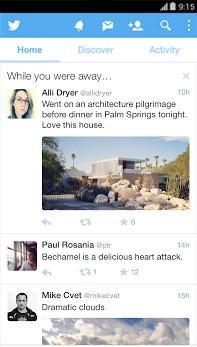
Twitter doesn't want for us to miss any important tweet published by anyone we follow when we're away from the social network, so as of today brings to our Android devices the new feature "While you were out...", which made its debut a month ago at iOS. "While you were out..." will show us in our own timeline a summary of the best tweets published while we were away from Twitter. The amount of recommended tweets will be higher or lower, depending on the frequency with which we access the social network. This new feature makes it much simpler for us to stay updated or get up to date, as regards everything that's happened in Twitter during our absence. To enjoy "While you were out...", you only need to have the latest Twitter version installed and wait for this summary to appear after some time without accessing it.
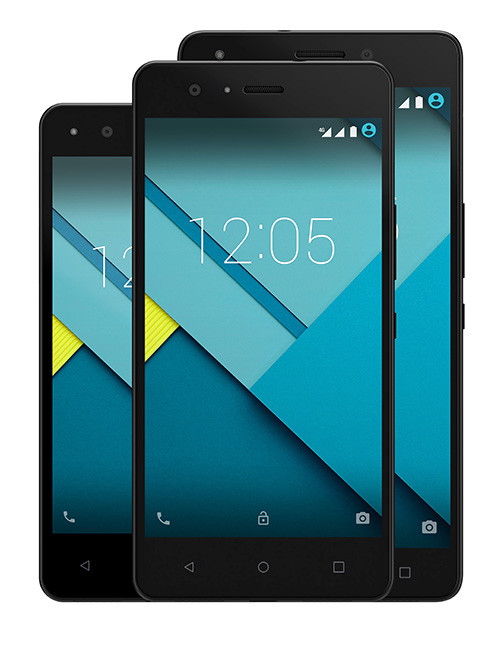
Bq also launches a new line of phones without waiting for MWC 2015. At an event in Madrid it has revealed its new Aquaris M line, with three new devices available in the sizes most demanded by users: 4.5, 5 and 5.5-inch screens. The Aquaris M4.5, M5 and M5.5 arrive with a design that's practically identical to last year's Aquaris E line. Its interior, however, houses new hardware, with 64-bit processors for the entire line and Android 5.0 Lollipop for all of them. As already mentioned, the design hardly changes. However, the new capacitive touch panel comes with Android L type buttons in place of the other ones.
Aquaris M4.5, M5 and M5.5
bq highlights that the three devices are completely designed in Spain, with ergonomy as one of the pillars of its design, reducing frames and modifying the positions of the side buttons for reaching these more naturally. Their covers are made of "top quality, impact-resistant" polycarbonate, with a textured back cover that gives the sensation of being ceramic. The screens are treated with an anti-UV filter and anti-oil coating to avoid fingerprints and outdoor reflections. They come back with the Quantum Color+ technology, covering up to 90% of the NTSC color space. The three models have a 64-bit processor to take full advantage of all of the power of their built-in Android 5.0. They also share 4G connectivity, whether or not the model has Mediatek. The smallest one, Aquaris M4.5, comes with a four-core Mediatek MT6735 processor and a two-core Mali 450, while the two larger ones are fitted with a Snapdragon 615 with a low-consumption, eight-core Cortex A53 and Adreno 405. There will be variations from 8 to 32 GB of internal memory, of course expandable using microSD cards. At this point we don't have details about these devices’ screen resolution or RAM capacity, given that marketing is scheduled for May, still giving them some time to adjust each phone's specifications. What we do know is their cameras’ resolution, which will be 5 and 8 megapixels for the Aquaris M4.5, and 5 and 13 megapixels for the Aquaris M5 and M5.5. This time they come with an innovation in that together with the front sensors for selfies, all models will have a frontal flash. Another thing we don't know about yet is whether this new line will repeat the use of Sony sensors. The new Aquaris M have been presented today, but they won't reach the market until May, in the two usual colors: white and black.
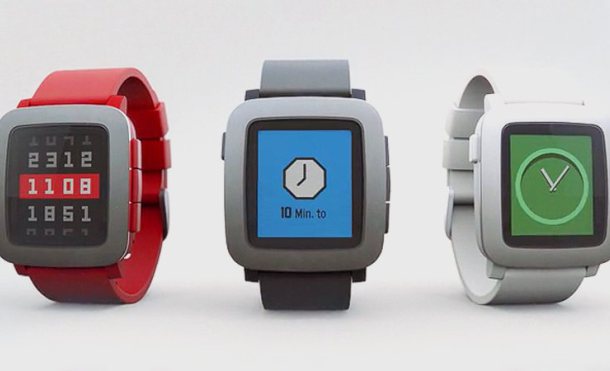
For many people, Pebble was the first smartwatch to keep any eye on, as it provided service for the leading platforms, and especially, thanks to its e-ink screen, had a much greater autonomy than its competitors had back then. Last Tuesday, the company launched Pebble Time, its successor, in Kickstarter. A lot has happened since it was launched in 2013 and, especially, new players like Google with Android Wear or Apple with the future Apple Watch, wherefore it's interesting to see what they're going to offer now in 2015. Pebble Time comes in three exclusive colors for Kickstarter: black, white and red, with stainless steel frames. Aside from that, the main change is that, finally, Pebble Time has a color e-ink screen. It still keeps, definitely, its great autonomy compared with other competitors with LCD or OLED screens, managing to keep you away from the charger for up to 7 days. In addition, its e-ink screen is amongst the most visible ones in sunlight, something absolutely essential for a watch, given the breadth of settings across which we may move. Pebble Time is 20% thinner than the previous Pebble, with a thickness of just 9.5 mm. Its curved design is very comfortable and ergonomic, according to the company. Its materials have also been improved. As we already mentioned, the frames are stainless steels, and the screen is protected by the resistant Gorilla Glass by Corning, still water resistant. The size of its strap remains the same, and can be replaced by any standard 22 mm wristband. However, Pebble Time does add a new, much more convenient way for replacing straps, thanks to a new suction system that does this in just 10 seconds. In addition, it also includes now thanks to its new microphone, a highly demanded function, that of responding to notifications with voice notes, something highly appreciated when we can't pull out the cellphone to respond to messages using text. It is compatible with SMS, Hangouts, Gmail, Facebook Messenger and other applications. For iOS, however, for the time being it is limited to Gmail, though they're working on increasing compatibility with more applications. As to its software, it is compatible with all dedicated Pebble applications and with all of the previous Watchfaces, which the company tallies at over 6,500. The company demands that, though already compatible, everything will look much better and more homogeneous with aesthetic updates. Yet, what's relevant about Pebble Time is the new interface that comes in color. Now all notifications, reminders, news or events are displayed together, similar to a notice center, instead of being separated across apps. As shown in the image above, with just a click we can move to the present, past or future of our recorded activities, notifications and tasks. We can purchase Pebble Time for $159 or $179 if we are amongst the first 5,000 or 20,000 first, respectively, that betted on crowdsourcing. If not, the official price later will be $199, after the Kickstarter closing date. The company will start shipping Pebble Time units as of May.
Services such as Onedrive, Dropbox or Google Drive have become essential in recent years. Amongst many other things, what they basically permit us is to access those documents we store there from any device with Internet access, something that did away with the need for carrying pen drives and portable disk drives. In this sense, all of these services practically offer the same functions through their applications, and despite this, the option that offers the least space is the one gaining the most popularity: Dropbox. Why? A single explanation is not available, given that Dropbox was the first to arrive and make an impact, loaded with functions, but beyond its popularity, using Dropbox with OneDrive or Google Drive is a matter of integration. In fact, Microsoft itself knew that in order to regain ground for Office it had to become better integrated, and it embarked on a collaboration with Dropbox. Thanks to this agreement, and by being installed individually in many iOS and Android applications, Dropbox is the leading platform beyond other factors such as upload speed or availability of free space. To fight against this advantage, today Microsoft presented OneDrive API. With this API, Microsoft hopes that developers will begin to think more of OneDrive for services that require many changes to files, or for continuing with pending uploads, which are always points about which it is always preferable to be cautious, as data may be lost along the way. According to Microsoft, just a few lines of code are needed to integrate Onedrive with Document Picker by iOS 8 or with Android Picker/Saver Picker, something that developers will most certainly appreciate. With steps like these, together with large and inexpensive amounts of storage being offered from Redmond, I think that OneDrive could become the tool that's needed for it to truly become a Cloud-First company as desired by its CEO, Satya Nadella.
It's true that Google Glass still triggers in users more doubts that genuine interest, though it seems that the star wearable of Google X Labs, and of the giant in Mountain View by extension, has been reborn with the arrival of Tony Fadell and the new development team. In fact, Fadell himself, when recently landed as the visible project leader, affirmed that Google Glass must get back to the design table for reviewing and rethinking its software, appearance and functionalities to adapt the product to a marketable version. Fadell didn't set any timelines, though he affirmed that a lot could be learned from the Explorer program experience, and that the new generation of Google Glass would arrive only when it was ready for the market as an attractive device for users. However, apparently the new Google Glass development team makes fast progress, as several media sources inform that, with its functions restructured and redistributed, everyone is working at maximum speed to create a pair of smartglasses that shift focus, moving away from the specialized public to try to appeal to the mass market. It has even been said that Google has already sent some selected partners the initial prototypes of the second generation of smartglasses so that they may share their experience for optimizing the functions of the new Glass. It also seems clear that the main point on which the Glass team is working is the "Glass at work" program, where in collaboration with another 10 startups an attempt is made to bring new ideas, software and functionalities for professional settings to smartwatches and other wearables. In fact, these companies are said to have received the prototypes, as well as the opportunity to work hand in hand with the Google Glass development team. We'll see what Google has prepared for us with the new Glass, especially now that everything related to virtual reality is becoming fashionable thanks to Oculus Rift and the generation of "low-cost" Google Cardboard glasses, and keeping an eye on what's to become of Microsoft and its HoloLens.
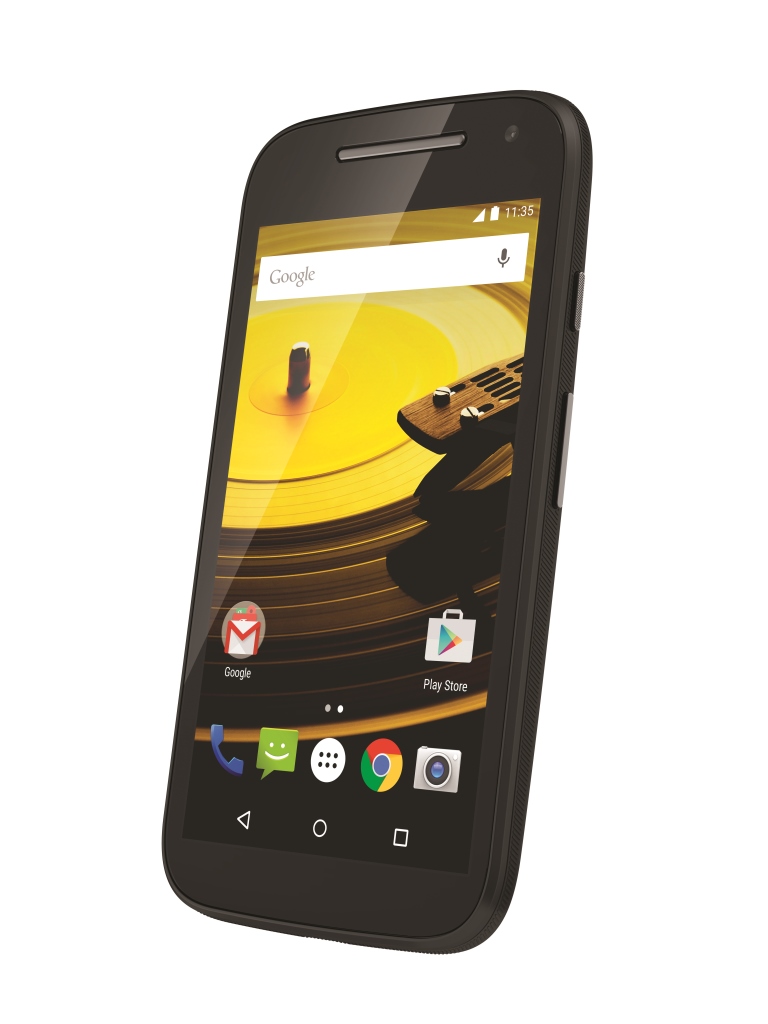
A surprise by Motorola, given that we were all expecting the presentation of a 2015 variant of its successful Moto E terminal at the Mobile World Congress, but in the end they jumped ahead and in recent hours have already made it official. Yet, that's where the surprises come to an end, because the device is exactly the same as the leaks of recent days had rumored. Starting with its design, the new Motorola Moto E is almost a carbon copy of the 2014 version. In other words, body with rounded corners, not particularly thin (its exact dimensions are 129.9 mm in height by 66.8 mm in width and 11.9 mm in thickness), and with plastic as its main material, for now available in two colors, black or white. As to its technical specifications, this Moto E is in line with its predecessor, though it improves all or almost all of those, to a greater or lesser degree. One of the most important ones is the 4.5-inch screen with qHD resolution (960 x 540 pixels, some expected 720p) and Gorilla Glass 3 protection, Snapdragon 410 four-core 1.2 GHz processor, 1GB of RAM, 8GB of internal storage, extendable to 32GB using a microSD card and 2390 mAH battery (Motorola claims that it perfectly lasts a full day of use). In addition to the two most important innovations already detailed, we must mention the front camera of VGA quality (the rear one remains unchanged, 5 megapixels without flash), and the inclusion of 4G connectivity, a major improvement with which the terminal is more complete as regards connectivity (the circle is completed with Bluetooth and Wi-Fi, without NFC). In summary, the Motorola Moto E is an entry-level smartphone, superior to its previous version and designed for people who can do without frills and want a decent smartphone at a good price that can do a little bit of everything. What is its price? A very reduced price, €129 (it may be purchased in Spain through main distributors as of February 28).
Apparently mobile payments are becoming a priority for Google now that Apple has completely and successfully plunged into this sector. If a few days ago we found out that Google had acquired the Softcard mobile payment technology, now we know that the search engine company may very soon take another step ahead so that in a near future Android devices will lead NFC payments. Ars Technica reports that trustworthy sources have informed that Google will present this coming May 28, during the Google I/O 2015 developers' event, its new mobile payment platform, called Android Pay. Android Pay would be an open platform that would offer all developers the necessary APIs to easily create "Touch & Pay" applications for performing completely secure transactions in establishments using the mobile's NFC. This new platform would use Host Card Emulation (HCE) architecture for mobile payments with NFC for which support already exists, since the Android 4.4 (KitKat). This way, Android Pay would be a platform for third-party applications that would help banks, shops and manufacturers to more easily implement mobile payments using their own applications. And, therefore, it would signify the take-off for Android in the world of mobile payments, so the idea of this platform is very good. Google Wallet would then use the Android Pay platform for making payments, wherefore the application would simply be used for managing balances and our debit and credit cards.
Google has found a new place for displaying sponsored results of searches, in the face of growing cuts to earnings per ad in mobile navigation. The company has stated, reported by Re/Code, that it will begin testing these sponsored results in its app store during upcoming weeks. The change is so that developers may promote their apps in a store with a lot of pending fine-tuning. Of course, this would generate income for Google. In a way similar to that in which the results of the web search engine are displayed, the results of sponsored searches will appear further up on the list of suggestions, together with a small label that specifies that it is an ad (see in operation). Another logical move if we bear in mind the Google business model and major investments in marketing by software companies, such as King Digital, the company behind the popular game Candy Crush, which invested over $100 million in marketing last year, promoting its game in TV advertisements. Some of these successful companies even sponsored advertisements during the most recent Super Bowl, something reserved to large, international companies. If the Play Store finally adopts this model, Google may earn even higher income over the percentage it obtains from ads in its Play Store. In the last 12 months, the search engine giant paid over $7 billion to developers that generated sales and purchases within the application. The company assured that it had obtained hundreds of millions of downloads from its app store. Nevertheless, Google is not the only one who tries to increase revenue through publicity in mobile navigation; Facebook, Twitter and Yahoo also promote their sponsored results during a key period in which the mobile sector is increasingly larger.
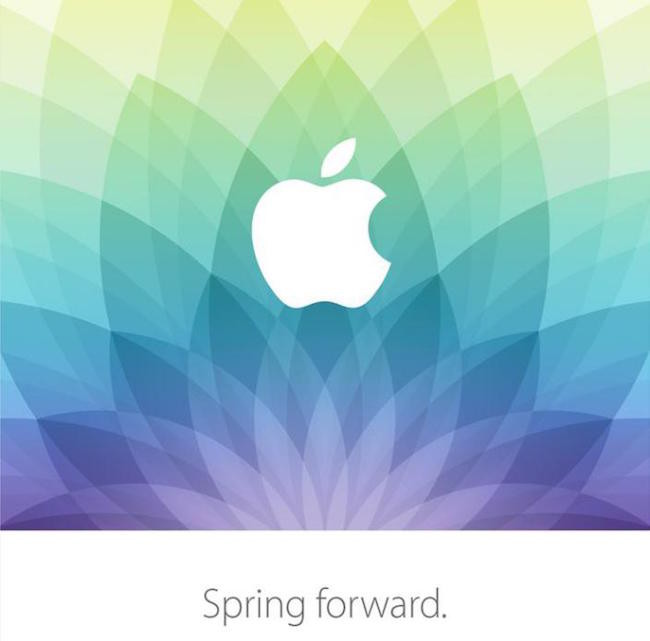
Apple has sent an invite to diverse US media, such as Business Insider, Wall Street Journal or The Verge, for March 9, very presumably to announce the arrival to its stores of the Apple Watch after its presentation in September. Rumors had it that it would be marketed in April, and the timelines fit. The main challenges and unknowns around the Apple Watch to date, mainly, concern its distribution: where will it be sold? At all Apple Stores or only at some? Will we find the Apple Watch at jewelers?
In addition to devices, this Mobile World Congress also promises to be the MWC of a new generation of mobile networks. While Samsung will give us a dose of the future with its 5G and Orange will try to surpass in a real setting the 300 megas for downloading, Vodafone is also going to bring some innovations. On one hand, the telecommunications operator will exhibit some of the possibilities offered by the Crowd RAN technology for quickly expanding 4G coverage. There will also be time for the first global demonstration of LTE-U, which could offer up to 600 megas for downloading, making use of 5 GHz bandwidth, or DSL/4G bonding, which allows for including in a router the advantages of fixed and mobile Broadband. 4G microcells ready for use. The first innovation for the future of 4G networks to be exhibited by Vodafone at the MWC will be of great interest for anyone who doesn't have good mobile coverage at home or at the workplace. Crowd RAN is the technology that permits improving the deployment of mobile networks at a much lower cost. A clear example of this is a curious device that we might discover in the coming days. In collaboration with AirSpan and Huawei, Vodafone will show a 4G microcell, which simply by connecting it to the power socket broadens the coverage within its area. Applications are many, as the device requires no further actions to work, and may be used in a vehicle or inside a building to improve indoor coverage. Take advantage of 5 GHz bandwidth. On another hand, Vodafone will also take to the trade fair a demonstration of the possibilities offered by LTE-U. This technology combines the bandwidth of usual mobile networks with 5 GHz bandwidth, promising download speed peaks of 600 megas. This band requires no license, and, therefore, can be used anywhere. In this case, the telecommunications operator's partners are Huawei, again, and Qualcomm. These brands, together with telecommunications operators and manufacturers, are developing this technology, so that the use of the 5 GHz bandwidth will only be activated when there are no other devices or WiFi routers, for example, using it. 4G and DSL in a single router. Last of all, the British telecommunications operator will also have time to display the advantages of extending the connections to fixed and mobile Internet. With DSL/4G bonding, a single router combines ADSL or VDSL bandwidth with 4G to add together the speed of both networks, reaching download speeds of up to 200 megas and upload speeds of up to 60. In addition, this method also ensures a user will not be disconnected in the event of failure of either of both networks. These are all of the new arrivals that Vodafone will show us in the next few days at MWC, at which not only new smartphones will be in the limelight. We'll be there to tell you everything that's happening.
Last Thursday, a court-ordered sentence obligated WhatsApp to be disconnected in Brazil for refusing to collaborate with police when data was requested by the justice system. The decision is known around the world, given that the cancellation of a service that is used by so many millions (there are over 100 million smartphones in Brazil) could have a highly negative impact in the personal and professional lives of a lot of people. During this time, two million Brazilians have installed Telegram, but this continues to be a very small percentage if we consider the WhatsApping fever consuming the country. This decision has been aborted just a few minutes ago, as we are reading the news: According to a note disseminated by the Tribunal of Justice, the application of the decision taken by Judge Luiz de Moura Correia ceases to be effective, wherefore WhatsApp will not be blocked (in fact, it has not been unavailable at any time). This does not entail the end of the obligation of WhatsApp to remit the requested data to the Intelligence Center of Polícia Civil do Piauí, an investigation concerning a child pornography distribution network that used WhatsApp as its means.
